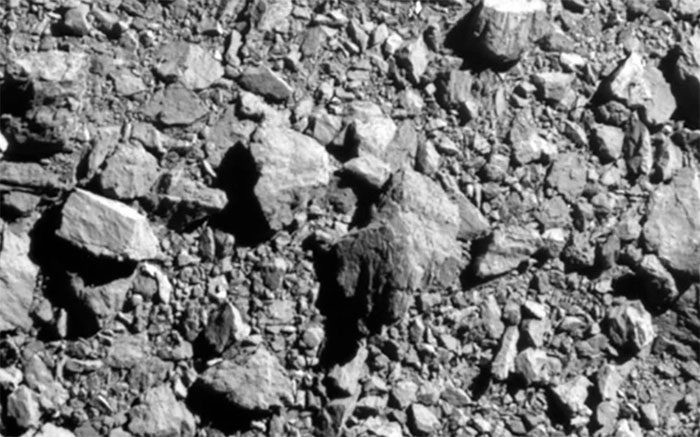NASA utilized the DART spacecraft to test the deflection of an asteroid, but inadvertently sent 37 large rocks flying through space at a speed of 21,000 km/h.
On September 26, 2022, NASA crashed the DART spacecraft into the asteroid Dimorphos as part of the first test of planetary defense for Earth.
The collision successfully redirected Dimorphos slightly. However, astronomers have now discovered that it also ejected 37 rocks, which are currently hurtling through space at a speed of 21,000 km/h, according to The Telegraph.

Final complete image of Dimorphos, captured by NASA’s DART spacecraft just 2 seconds before impact – (Image: NASA).
These rocks, detected by the Hubble Space Telescope, range in size from 0.9 to 6.7 meters. Astronomers believe these are not debris from the asteroid but rather rocks that were scattered on the surface and dislodged from the impact with the DART spacecraft.
A close-up image taken by DART just 2 seconds before the collision shows many rocks on the surface of Dimorphos that are similar in size and shape.
Experts indicate that this incident demonstrates that the strategy of deflecting asteroids could have unforeseen consequences, potentially causing smaller rocks to collide with Earth.
David Jewitt, a professor of Earth and planetary sciences at the University of California, Los Angeles (UCLA), stated: “This group of rocks resembles a cloud of shrapnel bursting from a hand grenade. Because those larger rocks essentially share the speed of the asteroid.”
He noted that in a typical high-speed impact, a 4.5-meter rock hitting Earth would release energy equivalent to the atomic bomb dropped on Hiroshima, Japan, during World War II.
Dimorphos is comparable in size to the Great Pyramid of Giza. This asteroid was selected for the deflection test because it poses little threat to Earth.
Technically, Dimorphos is classified as potentially hazardous, but it is currently 9.6 million kilometers away from Earth and poses no threat in the near future.
However, experts warn that if one of the rocks from this asteroid were to be deflected in the future and reach Earth, it could cause “significant damage.”
The research was published in the journal Astrophysical Journal Letters.


















































